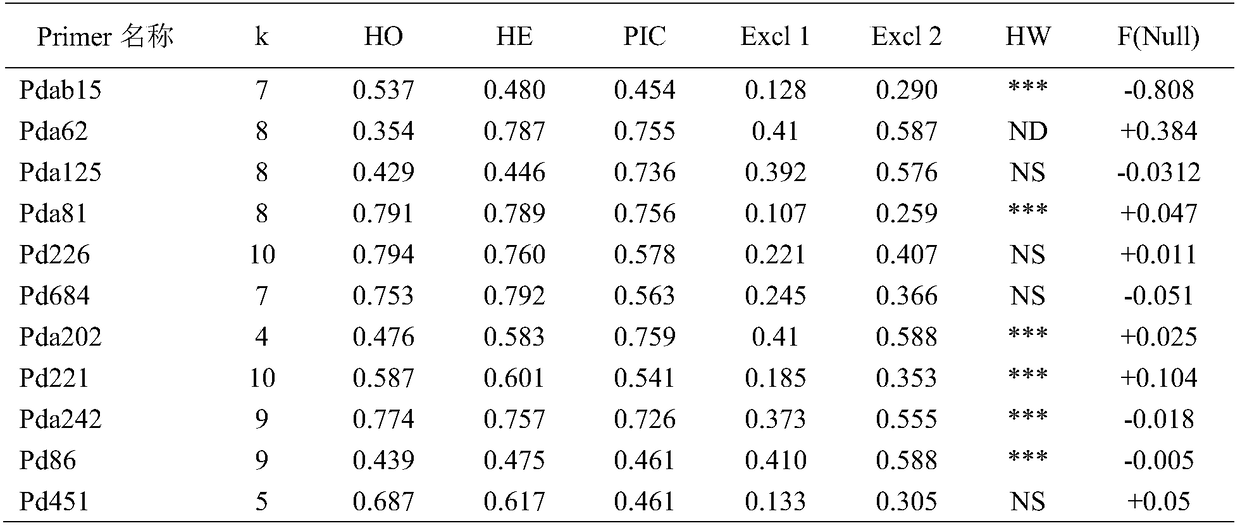Microsatellite-based paramisgurnus dabryanus family identification method and application thereof
A technique for the identification of Paraloach and its identification method, which is applied in the field of molecular marker assistance, and can solve problems such as family identification of Paraloach with no microsatellite markers, achieve high polymorphism, high identification accuracy, and speed up the breeding process Effect
- Summary
- Abstract
- Description
- Claims
- Application Information
AI Technical Summary
Problems solved by technology
Method used
Image
Examples
Embodiment 1
[0041] 1) Establishment of a full-sib family of Paraloach chinensis
[0042]Seventeen male and female individuals were selected from three wild populations of Dahuangbao Wetland, Chaobai New River and Tuanbo Reservoir in Tianjin, and 17 male and female individuals were artificially induced to reproduce. The ratio of male to female was 1:1, and 17 full-sib families were established. The fin ray tissues of the parents of each family were clipped and placed in absolute ethanol, and the family information was recorded and stored at -20°C for later use. 17 families were placed in 17 plastic water tanks for separate breeding. After the fry hatched for 15 days, 20 fish were randomly selected from each family and fixed with absolute ethanol as samples for paternity testing.
[0043] 2) Extraction of parental and offspring genomic DNA
[0044] Cut about 0.2 g of fin ray tissue from each parent, and take the whole fish from the offspring, put them in a 2 mL centrifuge tube, cut the tis...
PUM
 Login to View More
Login to View More Abstract
Description
Claims
Application Information
 Login to View More
Login to View More - R&D
- Intellectual Property
- Life Sciences
- Materials
- Tech Scout
- Unparalleled Data Quality
- Higher Quality Content
- 60% Fewer Hallucinations
Browse by: Latest US Patents, China's latest patents, Technical Efficacy Thesaurus, Application Domain, Technology Topic, Popular Technical Reports.
© 2025 PatSnap. All rights reserved.Legal|Privacy policy|Modern Slavery Act Transparency Statement|Sitemap|About US| Contact US: help@patsnap.com



